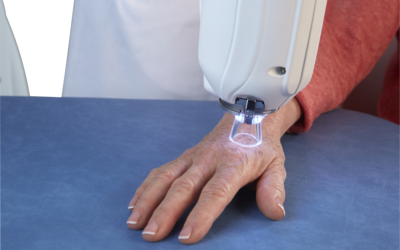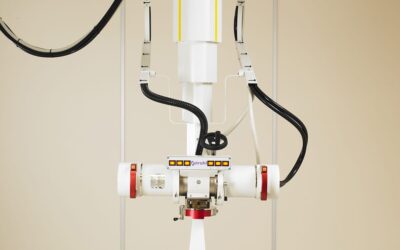The face of skin cancer is changing, as awareness is at an all-time high and medical technology is rapidly advancing.
Still, the Skin Cancer Foundation reports that more than 5.4 million cases of nonmelanoma skin cancer are treated each year in the U.S., affecting 3.3 million people. More people are diagnosed with skin cancer each year in the U.S. than all other cancers combined, with one in five Americans developing skin cancer by the age of 70.
There is good news, though. More and more cases of skin cancer are being detected and treated early. This is a result of a combination of better awareness for the signs and symptoms of skin cancer and its improved treatments. The American Cancer Society reports that across all stages of melanoma, the average five-year survival rate in the U.S. is 92%. The estimated five-year survival rate for patients whose melanoma is detected early is about 98%.
Skin cancer — including non-melanoma skin cancer, basal cell carcinoma and squamous cell carcinoma — should never be taken lightly. It is very important for people to advocate for themselves when it comes to the best practices in awareness, detection and treatments.
Anita Saluja is a board-certified dermatologist who practices in Melbourne, Fla. She said that while the message to wear sunscreen is heeded by most people, the rules of re-application are not widely known.
“The number one mistake I see when it comes to skin protection is not reapplying sunscreen based on its recommended SPF,” Saluja said. “The ‘sun protection factor’ refers to the number of minutes the sunblock is recommended. For example, SPF 30 means 30 minutes of sun protection.”
The American Academy of Dermatology also recommends that people take the following precautions to reduce the risk of skin cancer:
· Seek shade, keeping in mind that the strongest sun rays happen between 10 a.m. and 2 p.m.
· Cover up with lightweight long-sleeve shirts, wide-brimmed hats and sunglasses.
· Never use tanning beds. Ultraviolet light from tanning beds causes skin cancer and premature skin aging.
· Prioritize consistent skin self-exams to detect skin cancer early.
Old technology modernized for skin cancer treatments
Better prevention and skin cancer awareness are just the first steps to successfully raising survival rates. Improved treatment options also give patients a better chance at eradicating skin cancer.
Radiotherapy has been used for the treatment of nonmelanoma skin lesions since the late 1890s, but since that time, the experience of using radiotherapy among dermatologists has diminished and the technology became impractical for dermatologists in the late 1990s. This was partially due to large obsolete machines that were difficult to maintain and use for the average community dermatologist.
Now newer radiotherapy technology developed by Xstrahl makes it possible for local dermatologists to use radiotherapy with ease through a more practical approach for their patients, especially when surgical options may not be recommended or possible.
“The two best ways to treat skin cancer are surgery and radiation treatments and I always recommended radiation for people who are elderly, or wheelchair bound,” said Ken Takegami, a dermatologist with a private practice in Tullahoma, Tenn.
Xstrahl is a company trying to provide a practical application of radiotherapy that sidesteps surgery for successful options for patients. Xstrahl’s RADiant technology uses radiotherapy to remove skin growths, both cancerous and benign without surgery. This lessens pain and down time for many patients.The applications of RADiant include non-melanoma skin cancer such as basal cell carcinoma and squamous cell carcinoma.
Takegami was one of the first physicians in the U.S. to make use of a RADiant therapy device in his office and says that the choice he offers his patients is a welcome one.
“Most of my patients are older, with my oldest patient being 101 years old, and having a non-surgical option like RADiant is such a wonderful thing to offer them,” Takegami said.
Using a quick procedure that can lessen pain and down time, with faster recoveries, is why professionals like Takegami choose RADiant over traditional skin cancer treatments.
Learn more about this new skin cancer treatment option by visiting Radiant-Therapy.com.
Members of the editorial and news staff of the USA Today Network were not involved in the creation of this content.






